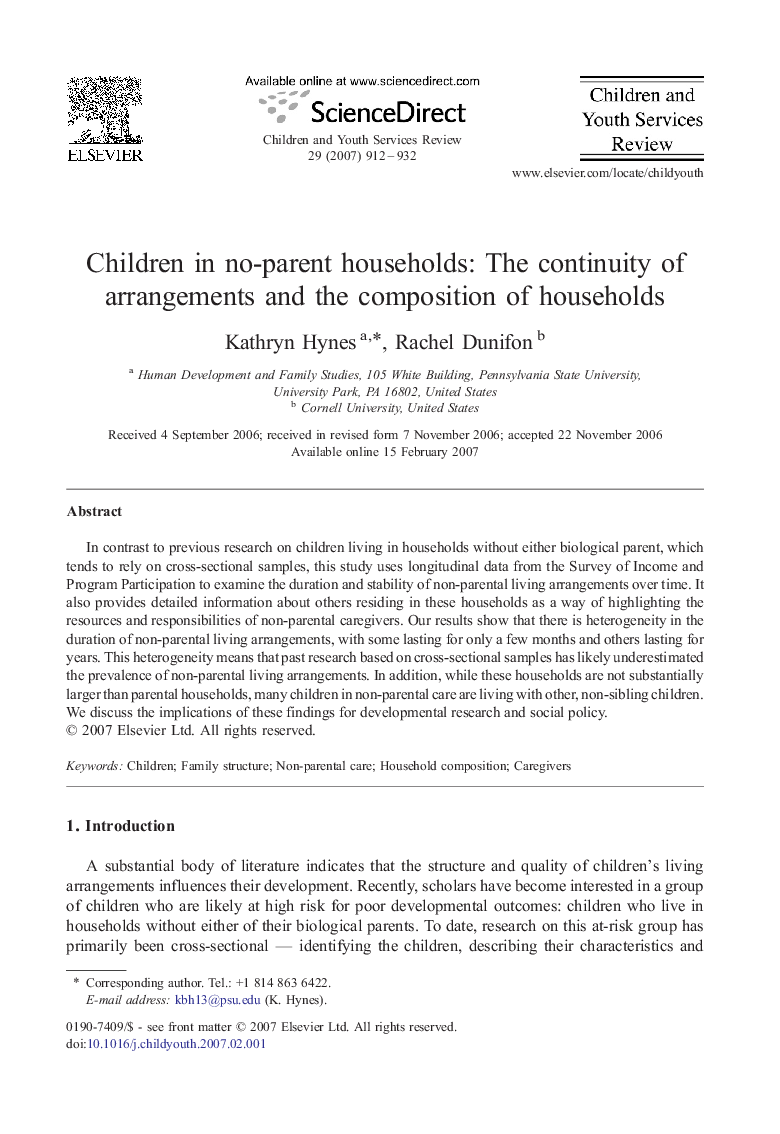| کد مقاله | کد نشریه | سال انتشار | مقاله انگلیسی | نسخه تمام متن |
|---|---|---|---|---|
| 347609 | 617936 | 2007 | 21 صفحه PDF | دانلود رایگان |

In contrast to previous research on children living in households without either biological parent, which tends to rely on cross-sectional samples, this study uses longitudinal data from the Survey of Income and Program Participation to examine the duration and stability of non-parental living arrangements over time. It also provides detailed information about others residing in these households as a way of highlighting the resources and responsibilities of non-parental caregivers. Our results show that there is heterogeneity in the duration of non-parental living arrangements, with some lasting for only a few months and others lasting for years. This heterogeneity means that past research based on cross-sectional samples has likely underestimated the prevalence of non-parental living arrangements. In addition, while these households are not substantially larger than parental households, many children in non-parental care are living with other, non-sibling children. We discuss the implications of these findings for developmental research and social policy.
Journal: Children and Youth Services Review - Volume 29, Issue 7, July 2007, Pages 912–932